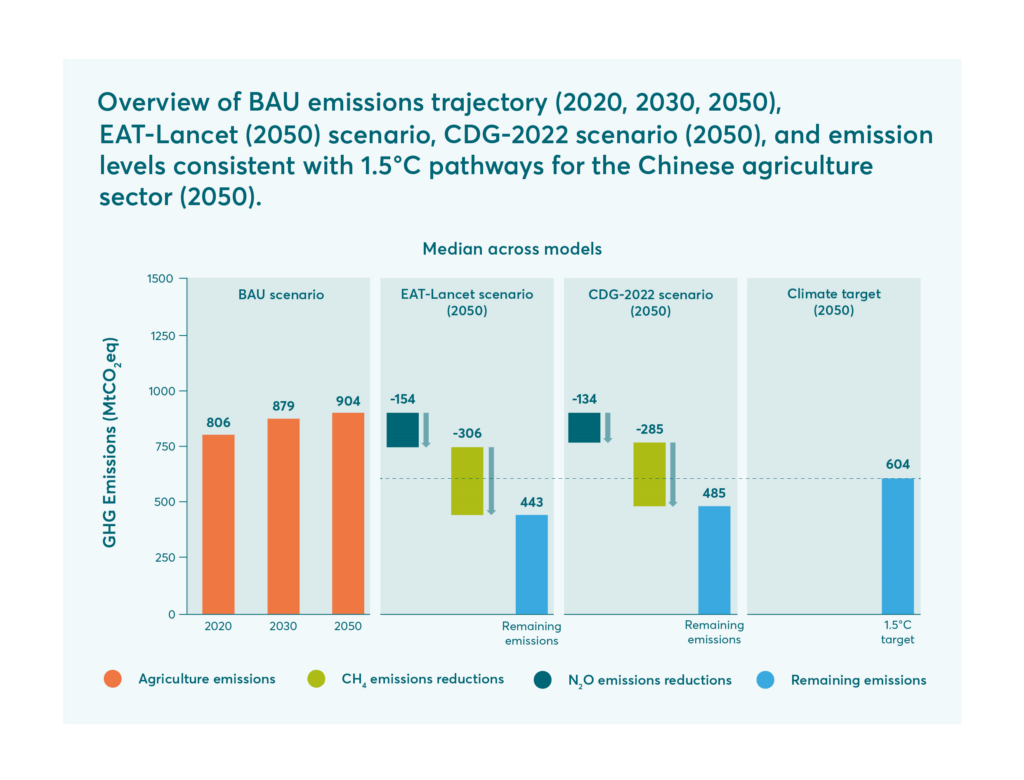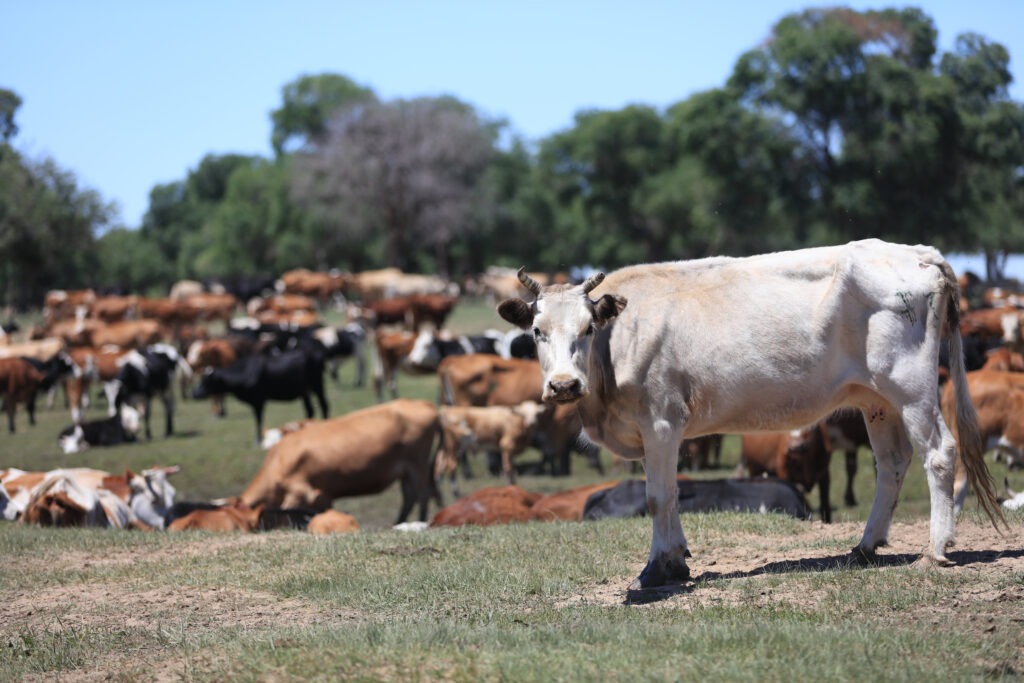How Diet Shifts Could Halve Agricultural Emissions in China: A key to climate neutrality
Authors: Fengwei Liu, FOLU China Director and Seth Cook, FOLU Asia Coordinator
As the world turns its attention to COP29 this month in Azerbaijan and prepares for COP30 next year in Brazil, there is increasing scrutiny of global powers’ delivery on their climate commitments. China, as the world’s largest greenhouse gas (GHG) emitter, holds considerable sway in the success of these efforts.
China has ambitious plans to reach peak carbon emissions before 2030 and carbon neutrality before 2060. Food and land-use systems are an essential component of meeting these climate targets, accounting for about 10% of China’s total GHG emissions. Plans for achieving climate neutrality in China have been extensively developed for the energy, industrial, and transport sectors, which are major sources of GHG emissions. There is now an opportunity to extend these strategies to the food and land-use sector, which could be a gamechanger for the country’s climate goals.
A previous FOLU publication, Tapping the emissions reduction potential of China’s food and land use systems to achieve carbon neutrality, explored these issues in some depth, as well as the institutional and policy barriers to achieving carbon neutrality in China. The paper made the case that a systemic approach is needed to address food and land-use system emissions, i.e. one that addresses the drivers of GHG emissions in food production, including unhealthy diets and food loss and waste. Such an approach must also explore solutions to reduce emissions on farms and increase carbon absorption in the environment.

Healthy and sustainable diets are a large part of China’s transition towards net-zero
Healthy and sustainable diets are a key component and driver of China’s transition towards a climate-neutral economy. A new FOLU paper, The impacts of healthy diets on future greenhouse gas emissions in China, finds that GHG emissions from China’s agricultural sector could be nearly halved (reduced by 46-51%) if healthy diets were adopted by people in China, defined as diets based on the latest version of the Chinese dietary guidelines (CDG-22) or the EAT Lancet Commission recommendations. Both of these diets advocate eating a wide variety of plant-based foods, including fruits, vegetables, legumes, nuts and cereals, with moderate amounts of eggs, poultry, meat and dairy products. Shifting diets in China towards those recommended by the CDG-22 or EAT Lancet would also have significant health benefits, helping to reduce the public health costs of obesity and non-communicable diseases such as type II diabetes, cancer and cardiovascular diseases. Moreover, there is ample cultural precedent for this, as traditional Chinese diets are rich in vegetables and plant-based proteins like tofu.
The authors of the paper used four different models to assess the effects of dietary shifts on GHG emissions: GLOBIOM-China, MAgPIE-China, FABLE CalculatorChina, and AGHG-INV. All four are independently developed models that are based on observed and modelled economic and biophysical data. Using four different models makes for more accurate results than had only one model been used. The paper also made use of three different scenarios to analyze the consequences of changes in dietary patterns for mitigating GHG emissions from the agricultural sector: business-as-usual (BAU); adoption of the EAT Lancet Commission recommendations for healthy and sustainable diets; and adoption of CDG-22. Both the adoption of CDG-22 and the EAT Lancet Commission recommendations resulted in significant emissions reductions compared to BAU (see figure below).
Methane reduction could be significant
In both the CDG-22 and EAT Lancet scenarios, emissions cuts are achieved primarily through the reduction of methane (CH4 ), accounting for 67-68% of the total GHG emission reductions. In most provinces, and for China as a whole, the Chinese dietary guidelines and EAT Lancet imply a reduced livestock sector, leading to decreases in methane emissions from enteric fermentation and other livestock-related sources. China’s agricultural-source GHG emissions and associated mitigation potentials vary significantly by region; those regions with the highest emissions also offer the greatest mitigation potential.
If China’s population were to adopt either the CDG-22 or EAT Lancet diets, it would help ensure that the agricultural sector aligns with global emissions targets that limit global warming to 1.5°C as specified by the Paris Agreement. And would contribute to efforts at this year’s climate COP, some of which will focus on reducing methane emissions from food and waste systems. It could also help ensure that the country’s agricultural emissions peak by 2030, thus helping the government meet its climate goals.

Clear policies and collaboration will be needed
Transitioning to healthy and sustainable diets will be a particular implementation challenge as it will require changing people’s dietary behaviour. Successful transitioning will require clear, locally adapted policy incentives that engage stakeholders, and that ensure equity and justice. It will also be critical to coordinate key stakeholders from the agricultural, health, education, and commercial sectors.
With its significant strides in reducing poverty and undernourishment, China is now well-positioned to embrace the large-scale adoption of healthier and more sustainable diets. This evolution can lead to substantial improvements in climate change mitigation, human health, nutrition security, and environmental sustainability, benefiting both people and the planet – in China and beyond.
Read more here










